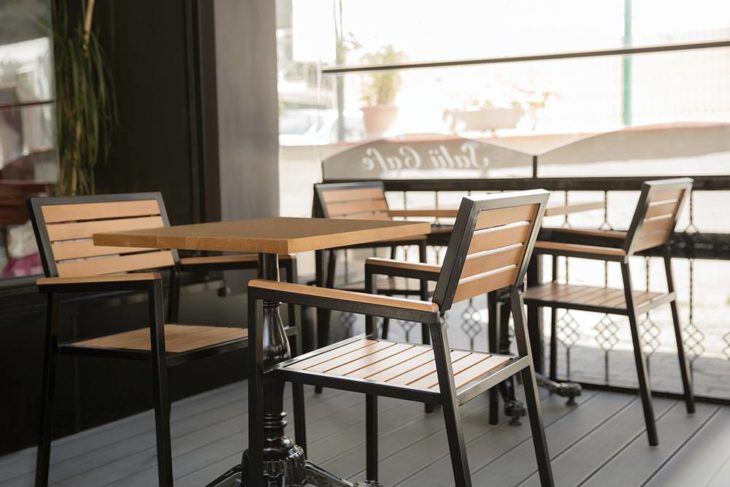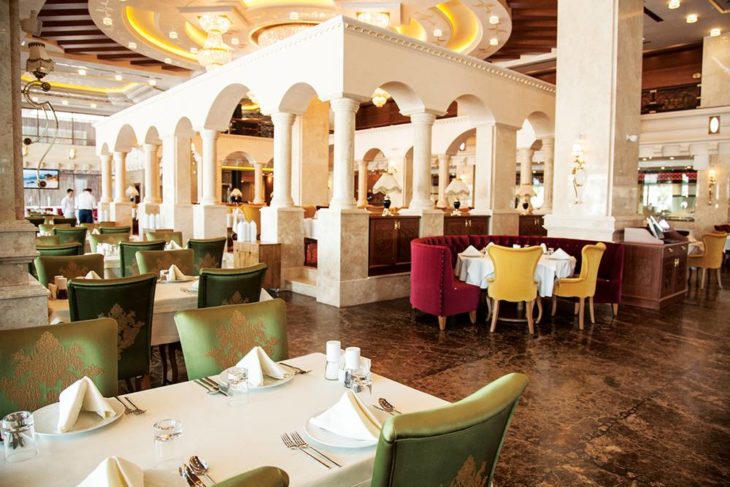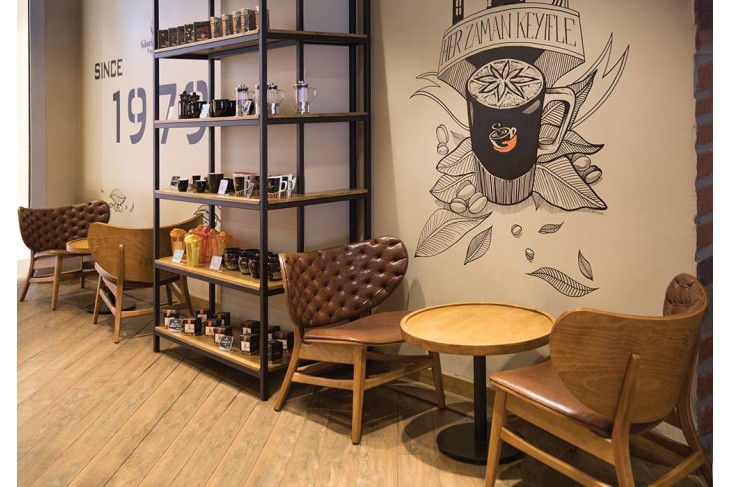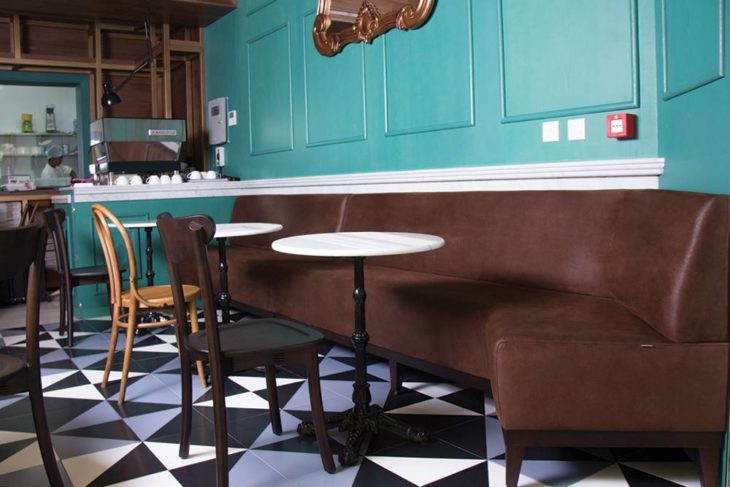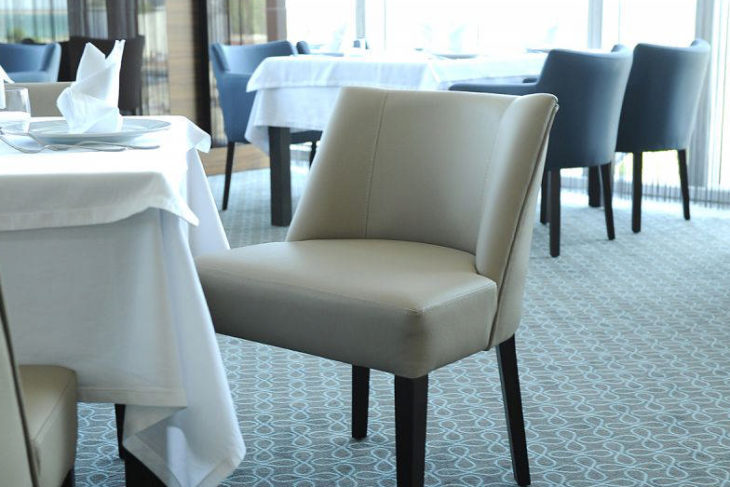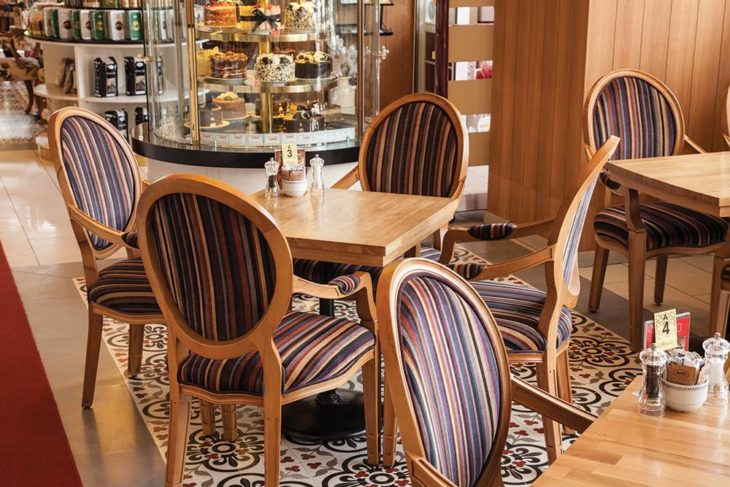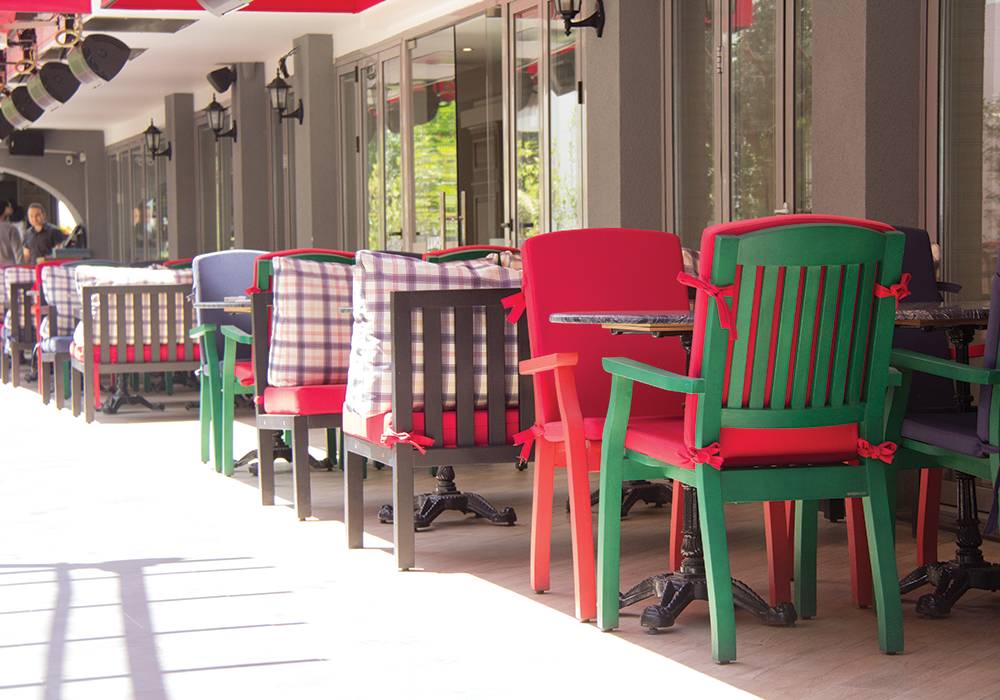
Albina Nazimova, interior decorator, and Ilya Piganov, artist have invaded the "holiest of holies" with impunity. This is a place you can't just stroll into off the street (in any sense). There's no sign – something that especially advanced socialites may regard as ultra-trendy. The atmosphere is as yet correct and tranquil devoid of frenzy, quietly club-like. Members of the Union of Architects (whose building this is) continue to appear here – at least once a month, when they come to pay their membership fees. The restaurant of the House of Architects in Granatny pereulok has from Soviet times been known for its mix of exclusiveness and democratic tolerance – like all restaurants in creative unions, incidentally.
When the decision was taken to refurbish it the designers were confronted with two problems. The first was the force of tradition, which encouraged people to regard this as a kind of private club mainly for architects and their friends. The second was the space's unambiguous and rigid structure. The tradition had to be maintained in some way; the architecture, to be left intact. From the start, it was decided that the large "main" room, the powerful pseudo-antique columns dividing the latter from the small "side-chapels", and the small cafe 'in the "vestibule" would be preserved. But it's difficult to believe that an interior constructed in the 1970s in a style reminiscent more of the Soviet Baltic states than of Moscow – more of Jurmala than Palanga, – a masculine, naturally aggressive interior, could be so transformed. And transformed, moreover, without the intervention of a professional architect. Leaving the architecture untouched, interior-decorator Albina Nazimova has made the restaurant more "feminine", softer, and – more complex.
A hint of withering, a few drops of bourgeoiserie, a faint nostalgia for the vanished Great Empire. The existing claret was diluted with gray; the ultramarine was diluted with gray, and the green, also diluted with gray. The result is an elegant pallor, as if everything were covered with a layer of museum dust – that non-specialists are not advise to touch. Albina Nazimova says she wanted "the main palette and emotional color to derive from what Ilya Piganov was doing". The restaurant has ten panels by this well-known Moscow artist. All are photo-collages realized through complicated technique that Piganov invented himself. These works fit neatly into the difficult space. Piganov's objects are, on the one hand, complex and painstakingly made.
One can gaze at them forever as with Persian miniatures or fantastically patterned wallpaper on a sleepless night. On the other hand, they are unobtrusive and easily fade into the background when people wish to focus on something else – an important quality in art which is to be displayed in a public space. Not only the colors, but the furniture and lighting are successful. The restaurant has nut and ebony tables, sofas, and chairs bought in China (after taking Europe by storm, the idea of ordering designer furniture from the Orient has made inroads into Russia too), all powerfully lit by designer lights. Ingo Maurer's Classical chandelier (which has become the maestro's calling card) copes excellently with the high ceilings. Chellini's standard lamps do the same for the length and width of the rooms.
Granatny pereulok, 7, the House of Architects
Source by Kate Bylak
